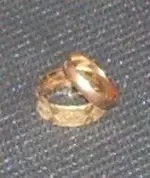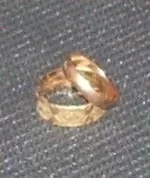gold fish
Bronze Member
- #1
Thread Owner
First off - love my cortez, but in learning, many times other peoples experience will speed up the curve. So I am hoping to start some kind of consensus forum on what kind of frequencies these machines give on different signals. For example, what are poeple reading on bullets?? Does anyone notice a difference in the signal between a silver half and a silver dime?? Stuff like that. A slightly more refined forum, for people who know what they are doing and don't have a lot of experience to back it up yet. Any input is good input, I'd like to keep questions to a minimum, and just get a good long string of answers to the FAQ's from people that actually use the machines.
I have a few quick questions regarding frequencies, I understand that i can run anything under the coil and check, but I have noticed some discrepancies between those readings and an actual target in the ground(namely pennies/nickels/pulltabs). First and foremost where does gold usually come in?? My Wedding ring reads 12-18.
Secondly, I am digging in areas with A LOT of iron signals, I have noticed that when I sweep "near" iron, I get a different reading(usually silver/copper). Is this a typical response from a cortez, or should I start digging more of these signals?? I usually dig if there is any question, but the returns aren't too good. Sometimes, I hit a coin, while the hole still beeps iron, if I dig deeper, sometimes I do hit iron. There have been times when I have dug down over 24" and am still getting a silver beep tho'. I usually figure that is just a "deep" iron signal.
Lastly, and this is really more of a comment, I have noticed that most of my deeper zinc penny readings are usually corroded wheats or IHs. I skip over a lot of surface zinc hits, because zinc gets ugly fast here(I have thrown out about 25 cents worth). If I get a shallow silver/copper hit, I always investigate tho'.
I guess I am basically looking for someone to either confirm my suspicions, or tell me I'm way off and probably passing up morgans or something. I am kinda new to this, but I have alot of virgin territory in my area, and I don't want to be missing things. I appreciate any and all feedback, thanx in advance.
I have a few quick questions regarding frequencies, I understand that i can run anything under the coil and check, but I have noticed some discrepancies between those readings and an actual target in the ground(namely pennies/nickels/pulltabs). First and foremost where does gold usually come in?? My Wedding ring reads 12-18.
Secondly, I am digging in areas with A LOT of iron signals, I have noticed that when I sweep "near" iron, I get a different reading(usually silver/copper). Is this a typical response from a cortez, or should I start digging more of these signals?? I usually dig if there is any question, but the returns aren't too good. Sometimes, I hit a coin, while the hole still beeps iron, if I dig deeper, sometimes I do hit iron. There have been times when I have dug down over 24" and am still getting a silver beep tho'. I usually figure that is just a "deep" iron signal.
Lastly, and this is really more of a comment, I have noticed that most of my deeper zinc penny readings are usually corroded wheats or IHs. I skip over a lot of surface zinc hits, because zinc gets ugly fast here(I have thrown out about 25 cents worth). If I get a shallow silver/copper hit, I always investigate tho'.
I guess I am basically looking for someone to either confirm my suspicions, or tell me I'm way off and probably passing up morgans or something. I am kinda new to this, but I have alot of virgin territory in my area, and I don't want to be missing things. I appreciate any and all feedback, thanx in advance.






